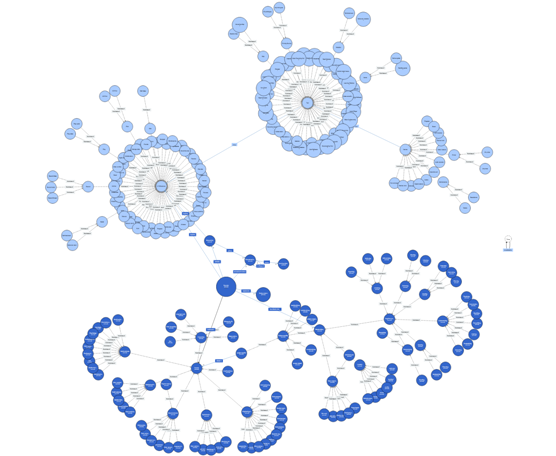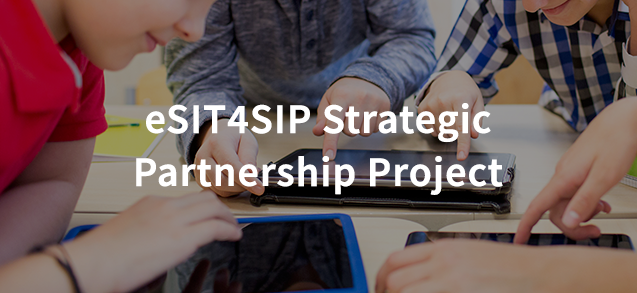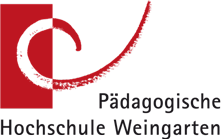





The eSIT4SIP Knowledge Base targets to support teachers in planning for the technical realisation of learning scenarios within their premises. To this end, knowledge of the feasibility of the scenarios is needed. It is based on the knowledge of the ICT facilities of the schools, that is, the infrastructure required to achieve the functions described in each of the scenarios.
Teachers may use the knowledge base

The eSIT4SIP knowledge base of technology-based learning scenarios and learning design patterns is a result of the ERASMUS+ Strategic Partnership Project „ Empowering the School IT infrastructures for the implementation of Sustainable Instructional Patterns“ (eSIT4SIP, 2015-2018).
The eST4SIP project targeted to promote practices that will help schools reach an e-mature level (as explained by the NCTE). More specifically, the project will be focusing on the wise use of ICT in schools and to ensure that teachers, students and other stakeholders are able to:

For this, eSIT4SIP applied the following methodology:


Miltos Miltiadou
Open University of Cyprus
Tech design and development

Koula Georgiou
Open University of Cyprus
School visits, Scenario writing

Nikoleta Yiannoutsou
Open University of Cyprus
Design, Scenario analysis

Chrystalla Neofytou
Open University of Cyprus
Researcher - Scenario Analysis

Alexander Gantikow
University of Education Weingarten
Web scraping, Technical development





For further information on the project please contact:
Wolfgang Müller
University of Education Weingarten
Media Education and Visualization Group (MEVIS)
mueller@md-phw.de

In this poster, we describe a vision of supporting the teachers towards the choice and adoption of ICT-based learning scenarios by means of mappings to the school infrastructure. The vision proposes the selection and curation of didactical design patterns, as repeatable solutions to problems found in such works as learning scenarios, and their mapping to each school’s infrastructure. This collection of patterns, linked to experience reports and scenarios, will offer the regular teachers a way to plan for their applications with a trust of realizability.
Facilitating the use of ICT at school has been often done by the creation and distribution of learning scenarios or by systematic training. However, these two approaches have systematic drawbacks. Learning scenarios, generally widely made available on the web, are presented as simple reproducible stories. It should be possible for non-technical persons to embrace technology scenarios and guidance from resources, in a confident way for her particular case. This paper discusses the approach of a collaboration project with schools and academic partners from three European countries called eSIT4SIP (Empowering the School IT infrastructures for the implementation of Sustainable Instructional Patterns, Erasmus+ project). We map scenarios, infrastructure and design patterns [Be00] which provide general solutions for recurring problems with respect to the relevant aspects of the school ICT infrastructure when implementing learning scenarios. The developed tools shall allow users to search for relevant teaching materials and inspiration at different levels of abstraction. The constituent components of our approach are a) the description of educational activities, b) the Knowledge Base that captures and disseminates domain knowledge, and c) the matching algorithm that maps patterns to school infrastructure.
We present the design of an online environment providing mechanisms for the exploitation of school ICT infrastructure by empowering teachers to discover and comment on educational activities (patterns, scenarios, experience reports) that can be implemented in their schools. To this end, our design approach will make explicit the linking between the patterns, the learning scenarios and other contextual information. The online environment will not only serve as a repository of educational activities but will help schools to analyze their infrastructure, to select proper scenarios that effectively exploit it and, potentially, to enrich these scenarios by commenting on them.
In this paper we report work in progress describing how we address the problem of infrastructure by creating a decision-making system that will help teachers to adapt existing ICT scenaria to their practice and to their school’s infrastructure by proposing alternative technological solutions with the same or similar functionalities. The eSIT4SIP methodology (http://www.esit4sip.org), based on an ontology capturing concepts of learning and media technology, results in the analysis of a scenario into its constituting elementary activities (micro-activities); the explicit specification of the affordance of the ICT tool that allows the m-activity to take place; the description of the educational functionality accomplished; and the extraction of the teaching approach, which constitutes the Instructional Design Pattern of the scenario. For each m-activity the knowledge base of the eSIT4SIP decision-support system provides (1) alternative technology with the same or similar affordances and (2) alternative micro-activities with similar educational functionality. These may lead to learning-equivalent scenario variations feasible with the existing school infrastructure. The Instructional Design Patterns act as guides for the acceptability of the variations.
For the maker movement to find its way in the large- scale education, school infrastructure (un)availability is a critical factor. In this paper we present the eSIT4SIP approach; using ontology and knowledge engineering tools and concepts of “elementary activity”, “ICT educational functionality” and “instructional design patterns”, eSIT4SIP provides teachers with tools to adapt and adopt ICT-enhanced activities to their school’s existing infrastructure. We investigate the specific challenges of “craft-and-make” educational scenaria and we explore lines of further work to support teachers not only to adapt these activities to the available equipment but also to preserve the spirit and the pedagogical principles of the maker movement.